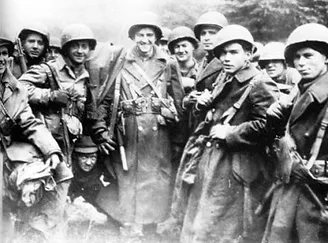Brief history of the 505th The 505th Parachute Infantry Regiment was formed at Fort Benning in July 1942, under the command of James M Gavin. The regiment was eventually organized into a regimental combat team (RCT)
The 505th RCT became the only RCT to gain four jump stars - awarded by parachuting into Sicily, Italy, France and Holland. After these, the 505th then went on to serve in the Battle of the Bulge, pushing into Germany and eventually taking up occupational duty in Berlin after the war's end.
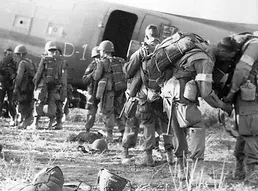
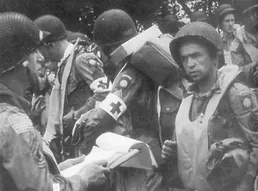
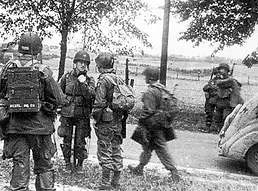
The 505th was activated at Fort Benning in July 1942, before moving to Camp Billy Mitchell in Alabama. There, the regiment underwent intense physical training before leaving the States in April 1943 for Morocco. Once they arrived in North Africa, the 505th honed their skills in the demanding heat for six months, before flying to Kairouan to prepare for their first combat jump.
Their mission, part of Operation HUSKY, would be the first Allied use of a large Airborne force landing behind enemy lines. The drop into Sicily was badly scattered, due to strong winds, poor visibility, and general inexperience. Many paratroopers missed their Drop Zone (DZ) by many miles. Despite this, the 505th's training enabled them to fight on and capture their objectives.
One of the 505th most famous engagements in this chapter was at Biazzo Ridge, where the paratrooper's Bazookas just weren't enough to halt the advance of German armour, including the new Tiger I tanks. When the tanks were within 50 yards of Gavin's command post, the 505th made contact with Navy destroyers off shore and friendly howitzer batteries, calling in barrages which drove back the German advance. This enabled the 505th to counter-attack and push the Germans off the ridge, securing victory.
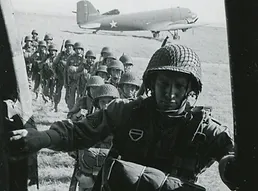
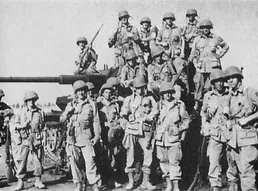
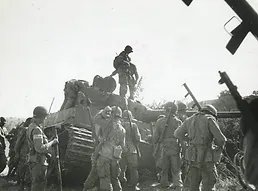
On 13-14th September 1943, the 505th once again found itself on a night time drop, this time behind the beachhead at Salerno. Many lessons had been learned since Sicily, and this drop saw the first use of Pathfinder teams landing before the main invasion force. Their guidance resulted in much tighter jump patterns after the chaos of Sicily. During the liberation of Naples, Major Ed "Cannonball" Krause famously raised the American flag over the city. This became the first major European city to be liberated. After securing Naples, the 505th then assaulted and captured multiple bridge canals over the Volturno River. In mid-November, the 505th were then reassigned to training in Ireland, near Cookstown.
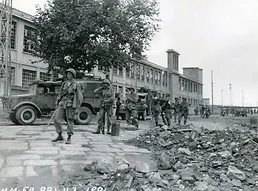
On the morning of June 6th 1944, the 505th parachuted into the countryside of Normandy in the early hours of D-Day. Their objective was Sainte-Mère-Église, along with surrounding roads and bridges. Among these was the famous bridge at La Fière, where the 505th, alongside other units, captured and dug in. Over the next three days they repelled multiple counter attacks by the Germans, including the destruction of multiple tanks by Bazooka teams.
The 505th held strong and eventually launched their own assault back down the Causeway over the bridge, securing victory. Sainte-Mère-Église was the first town in Normandy to be liberated by the Allied invasion, and helped secure links to neighbouring towns which opened up the Allied beachhead.
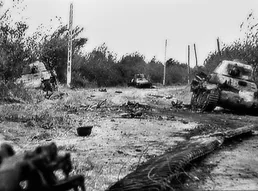
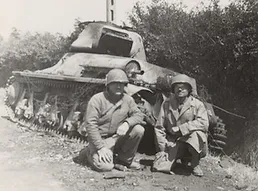
In September 1944, the 505th jumped into Holland as part of Operation Market Garden. The 505th jumped near Groesbeek and proceeded to capture Nijmegen.
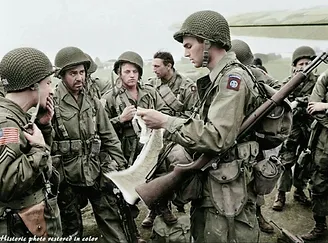
In December 1944, the Battle of the Bulge began. The 505th were transported by trucks to the town of Trois-Ponts, where they mounted an epic defense against the German Panzer divisions.
As the war drew to a close, the 505th pushed into Germany and eventually took up occupation duty in Berlin, before returning to the US, culminating in the famous New York Victory Parade in 1946.
